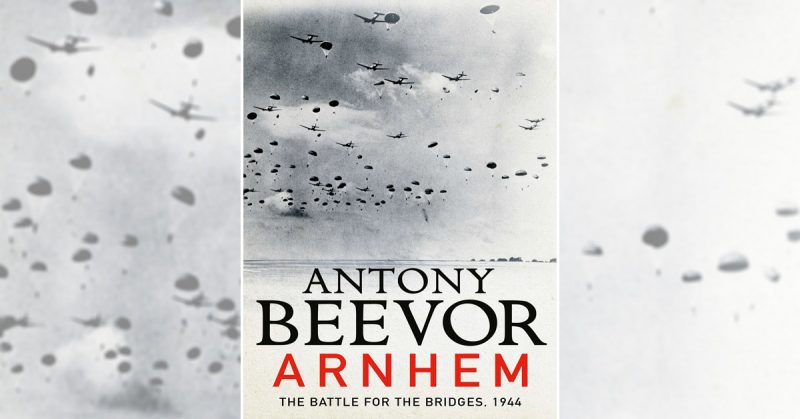A mate of mine happened to call in and noted I had a copy of this superb book by Antony Beevor. “Oh, I went to his house, once… He opened the door wearing an open shirt with big smile on his face and smoking a cigar.” I can only assume Mr Beevor is in a similar frame of mind based on the universal approval of his latest work.
I had some doubts there was anything new to add about an operation that has received a great deal of attention from historians and veterans, but the author has pulled it off.
I can’t be the only person who came to Operation Market-Garden through the stirring prose of Cornelius Ryan in A Bridge Too Far. I still possess the 1974 edition I received as a 15 year-old lad and was greatly influenced by his writing style. Ryan had a team of researchers who took the questionnaires he prepared for witnesses to history to complete.
He used them to corroborate accounts and join the dots and build a colourful picture of events. He was writing at a time when many of the leading protagonists were still alive and he might be accused of being gentle on the reputations of some of them. There are no such problems for Antony Beevor and he takes no prisoners. National heroes or not, generals and field marshals are all fair game if a truthful picture of a complicated campaign is to be presented.
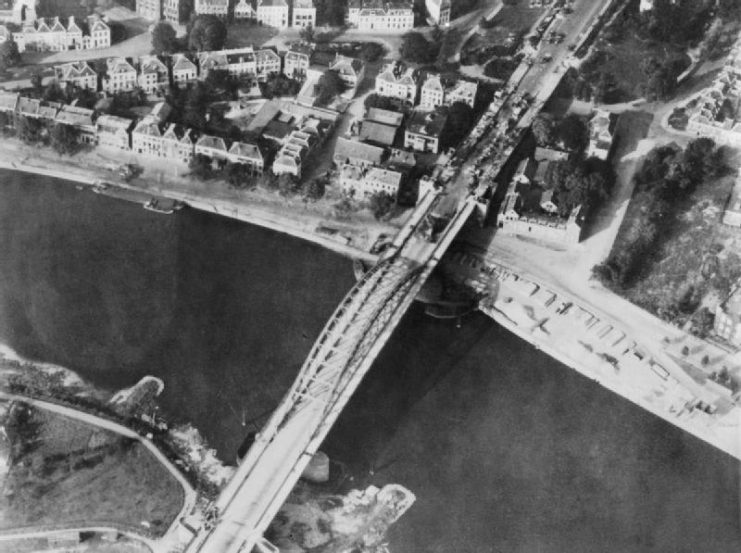
Context is the first casualty of hindsight in many a telling of a military campaign. By the late summer of 1944 Britain’s place within the alliance was diminishing by the day as American dominance in manpower, industrial output and military might was beyond question.
The ambition and vanity of the newly minted Field Marshal Montgomery was peeked by the concern of Churchill and Field Marshal Alan Brooke that the British position could be bolstered by a great victory.
Ruinous casualties in Normandy had hit the British hard and replacing them with significant numbers of men was impossible given the manpower shortage afflicting industry and the military. The only option was to break up divisions in the field to fill the depleted ranks of other units. The Americans had none of these problems and it is quite correct that politicians, the press and the public at home would want to see their armed forces taking the lead on the way to victory.
Monty was desperate to win a great victory for himself and his plan to drive a British army into Germany supported by airborne units offered so many possibilities, but as the plan developed from concept to reality it was clear that there were many serious flaws and it is difficult to ignore them when we consider how such a dedicated professional soldier as Montgomery could be seduced into setting these problems aside.
The momentum carried down into the British 1st Airborne Division who were given the plum role of capturing the Arnhem bridge. A number of American officers were relieved to avoid the poisoned chalice.
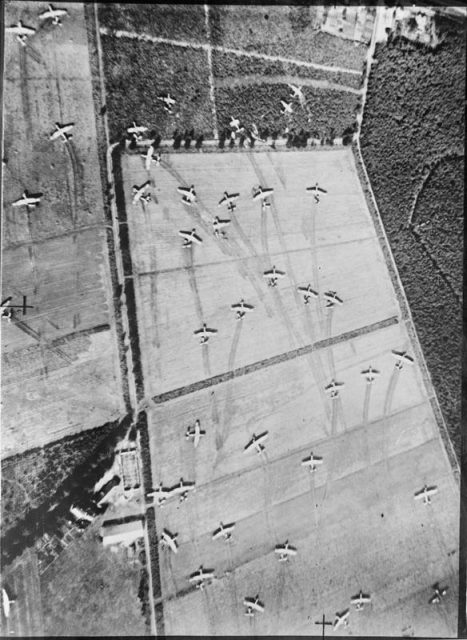
The 1st Airborne itself had been sitting out events chaffing at the bit after seeing costly actions in North Africa and Sicily. The division’s commander had been killed in Italy and his eventual replacement, Roy Urquhart, had to address fears the war would be over before the division got another go at the enemy.
American airborne veterans of Sicily and Normandy were much less enthusiastic but they were ready to get on with it and the reputations of the 82nd and 101st Airborne Divisions would be further enhanced in the weeks to come.
The plan for the ground forces advancing from Belgium came in for considerable criticism at the time and since but Monty and his planners steamrollered their way through any objections. Perhaps the greatest error was to assume the Germans would not react with any ferocity.
With good luck and fair wind the plan would be a great success. The British and Poles, in particular, would see little of either, but the biggest losers were the Dutch who would suffer terrible privations as a consequence of the failure of Market-Garden.
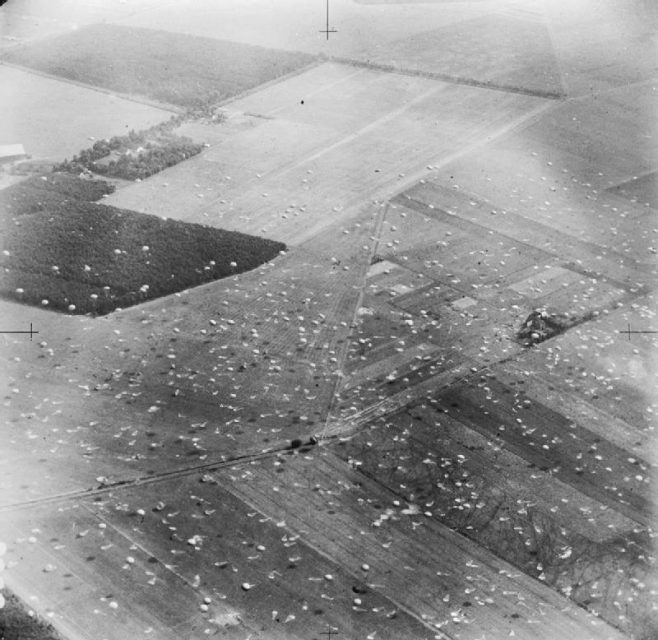
Much of the events of the operation are well known thanks to a succession of authors and the movie version of A Bridge Too Far. My library includes books by Stephen Ambrose, James Holland, Robin Neillands and Charles Whiting in addition to some biographies and the huge work done by After the Battle.
The episodes covering the battle in the television adaptation of Band of Brothers are as popular as ever and every military history buff should see the stunning Theirs is The Glory from 1946. One of my favourite Arnhem books is The Cauldron a semi-fictional account by the veteran Gerald Lamarque using the pseudonym Zeno.
I’ve toured the battlefields with my friend and colleague Joris Nieuwint driving his Dodge Weapons Carrier and we even met an elderly man who recalled watching the airborne carpet drifting down near Veghel. This was all pretty emotional stuff even for a hard-nosed sod like me.
There were so many heroics to recall but I have to say the place that did it for me was the Nijmegen Bridge where I could gaze along the river to where the US paratroopers rowed across in one of the greatest feats of arms of the war. The British cemetery at Oosterbeek is a sad place, especially the Polish plot, the dead were the victims of a great injustice in the immediate post war political climate.
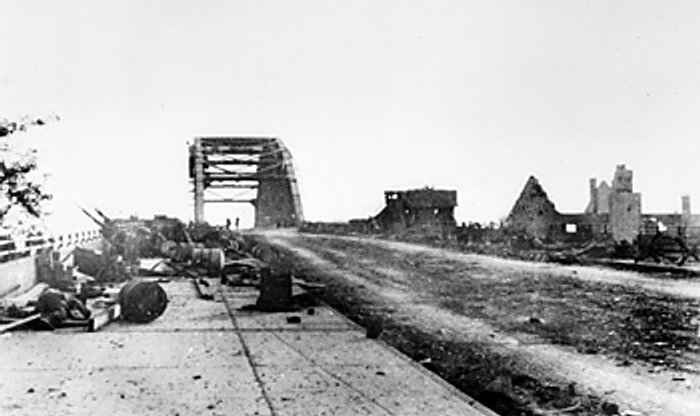
Mr Beevor follows the expected route of having great admiration for ordinary soldiers and junior officers. His treatment of the Dutch and all that they endured is exemplary. The author shows a begrudging respect for many of the Germans but doesn’t get carried away and points to the cynical war criminals and nasty individuals among them. He singles out a number of British and American senior officers for criticism and it is difficult to disagree with his analysis.
This is a well-balanced book that eschews narrow nationalism. It encourages armchair generals to climb out of their soft furnishings and face hard truths and while aspects of contemporary nationalism are inevitable because they really did happen it is right to remember that a difficult individual like Monty was loathed by numbers of his own countrymen just as much as by some of their erstwhile allies. Fair to point out that Monty was not the only senior officer afflicted by vanity.
I will love A Bridge Too Far and the work of Cornelius Ryan for the rest of my days. My father used the great man to ignite my love of military history when I might have been reading Tolkien or Kerouac like many of my friends. Mr Beevor takes Ryan’s classic single volume history forward and presents a book that is equally as respectful to the men who fought and died as it is to the much put upon people of the Netherlands who paid heavily for their eventual liberation in 1945.
The author is able to be far less diplomatic to many of the now long dead senior officers in this story but he doesn’t go for cheap shots and this helps create a wholly impartial account, notwithstanding reasonable revulsion for German excesses.
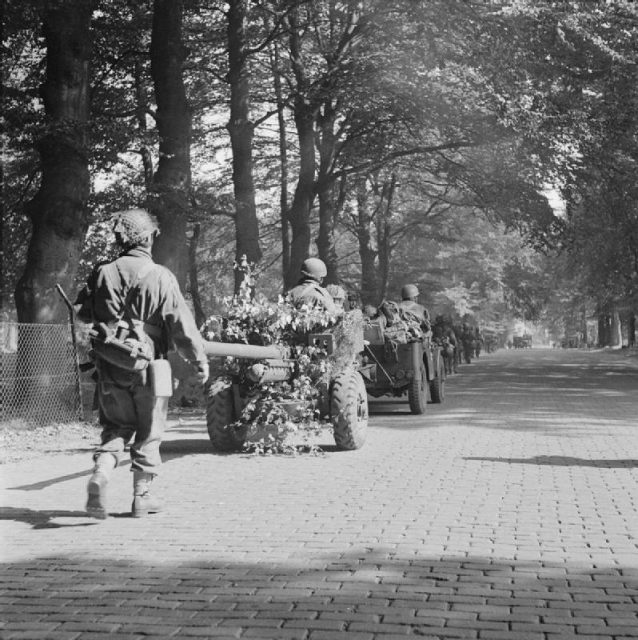
I think this book will become a classic and it follows the author’s brilliant works including accounts of Stalingrad, the fall of Berlin and D-Day. He gives it to us straight and we can’t really ask for much more from our historians. I like to think there are young kids who will be influenced by the writing of this book as much as I was by Cornelius Ryan forty odd years ago.
Going back even further to eighty years ago a breathless reviewer in The Times described the release of a new book by the famous military theorist Basil Liddell Hart as ‘an event’ and some of the coverage of this book by Antony Beevor implies he has inherited that mantle in many respects.
Good luck to him. Top quality ‘popular’ history can be inspirational and there is no question that this is what we have here. Arnhem is a brilliant read.
Reviewed by Mark Barnes for War History Online
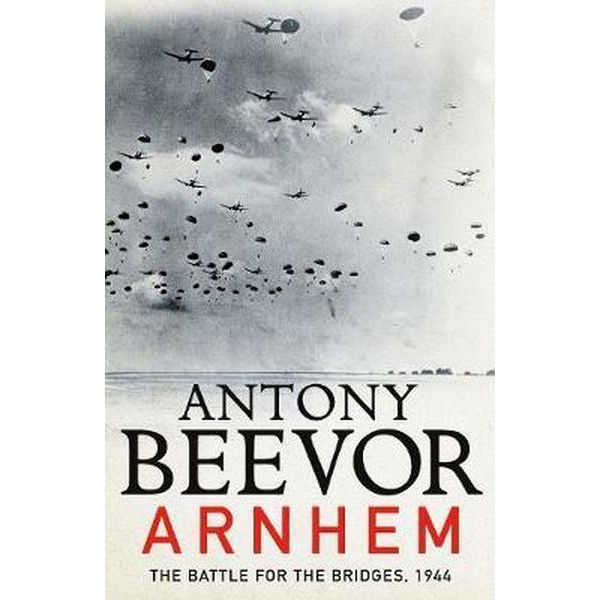
ARNHEM
The Battle For The Bridges, 1944
By Antony Beevor
Viking
ISBN: 978 0 670 91866 9
